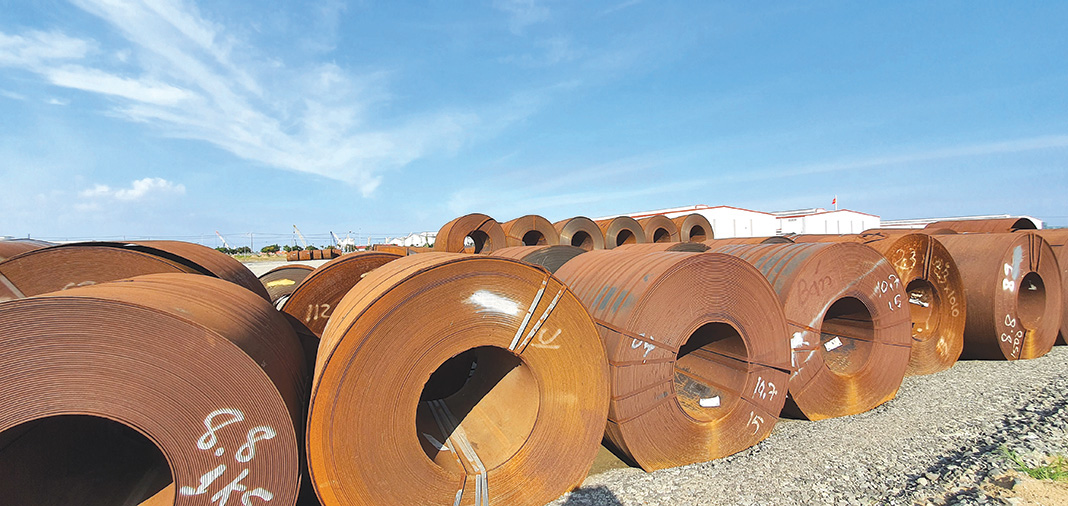Both the North Van Phong area in the coastal province of Khanh Hoa and the Chu Lai Airport in the central province of Quang Nam have ample opportunities to build world-class logistics hubs. However, questions remain as to whether regional development strategies should be focused solely on short-term profit goals.
Efforts to modify the Van Phong Economic Zone planning project by 2040 with a vision to 2050 have successfully laid out a prosperous outlook for the region. In addition to ensuring the development goals that were approved previously, the plan has sought to link economic growth with environmental sustainability aspects. It has increased the project’s attainability thanks to the participation of a renowned international consulting business, which may reduce skepticism regarding possible risks that could arise.
However, it has been particularly questioned if North Van Phong could achieve projections on the country’s potential to become a prominent high-end tourism destination in the next 20-30 years. Moreover, doubts remain over whether Khanh Hoa Province or any other locality would serve as a preferred place for expensive sports and luxury yachts for individuals with deep pockets.
Even though the planning project authorized by the Khanh Hoa People’s Council substantially addressed concerns over the pathway of the North Van Phong region, looming obstacles may turn out to be more challenging than expected. In its proposal, the consulting firm aimed to prioritize tourism development in the region, and the choice was well embraced due to its obvious short-term benefits. However, hurdles have been raised as the approach requires shifting the proposed international hub port to South Van Phong, which is at odds with the initial plan for the industrial zone development by 2030.
Unsurprisingly, economist Bui Kien Thanh expressed worries about what would happen if the plan gets the nod. The Van Phong international port development was one of his key suggestions some 20 years ago. In 2002, there was even a discussion on the likelihood of the project’s cooperation between officials from a U.S. delegation, Khanh Hoa’s provincial government and the Vietnam Maritime Administration under the Ministry of Transport. At the time, the Hon Gom peninsula to the north of Van Phong was chosen for the port’s location, given its favorable conditions.
The peninsula serves as a 20-kilometer-long natural dyke, creating some 43,544 hectares of water surface, three times larger than Cam Ranh Bay. The water depth ranges from 20 to 40 meters, which is also way deeper than that of many major international ports.
Once operational, the Van Phong port will be capable of receiving ships of all types, including huge container ships and ultra-large crude carriers with 500,000DWT, or deadweight tonnage, and above. However, instead of the north peninsula, the recent revision has recommended building the port at the current location in South Van Phong due to financial benefits.
As a result, the port will only handle ships of 100,000DWT or less, as the deepest part is just 12 meters deep.
Whether the project is in the South or North Van Phong, the Government’s decision will have a significant impact on Vietnam’s goal of improving its position in the global logistics market, as well as the country’s chance to become a focal point of the Indo-Pacific region, the most dynamic growth arena in the next decades.
Currently, some 40% of the cargo volume from the Indian Ocean to the Pacific Ocean may have to transit via Vietnam en route to China, Japan, and the U.S. Meanwhile, the upcoming Kra Canal project in Thailand, which connects Southeast Asia and South Asia, will further expand the prospects of the country’s role in global shipping services. By linking the Gulf of Thailand in the Pacific Ocean to the Andaman Sea in the Indian Ocean, the project will help increase the number of ships through the regional routes, enabling tankers and other commercial vessels to bypass the Straits of Malacca and Singapore.
In addition, the Chu Lai Airport in Quang Nam Province is situated in the center of an air transport system with a three-hour destination network throughout Asia, namely Japan, South Korea, and China in the northeast, Thailand, Indonesia, Myanmar, and Singapore in the southeast, and India in the south. The area comprises two-thirds of the world’s population and is home to an economy that accounts for more than half of the global gross domestic product. As a result, the Chu Lai Airport development outlook should be incorporated with the direction of national growth, which might make it more attractive in terms of private business investment.

Simply put, developing the Chu Lai Airport project with a focus on logistics service would echo the building of the Van Phong international hub port in the region. Together, both endeavors might potentially fuel the expansion of Vietnam’s logistics sector in the years to come.
Furthermore, Vietnam may see an increasing demand for ship maintenance and technical support, both civilian and military, as it aims to become a major international shipping hub. In this scenario, a service center may be built as an important supplement facility to the overall development plan, with the Hon Gam peninsula functioning as a natural dyke to ward off approaching vessels.
As Thanh stated, “We may have to weigh the pros and cons of focusing on a short-term advantage with tourism profits belonging to a group of minorities versus prioritizing substantial prospects in the long run given Van Phong’s potential to become a key international hub port like Singapore, Melbourne or Rotterdam.” In this regard, “what would be the better option for the goal of a strong and independent Vietnamese economy?” Thanh asked.









